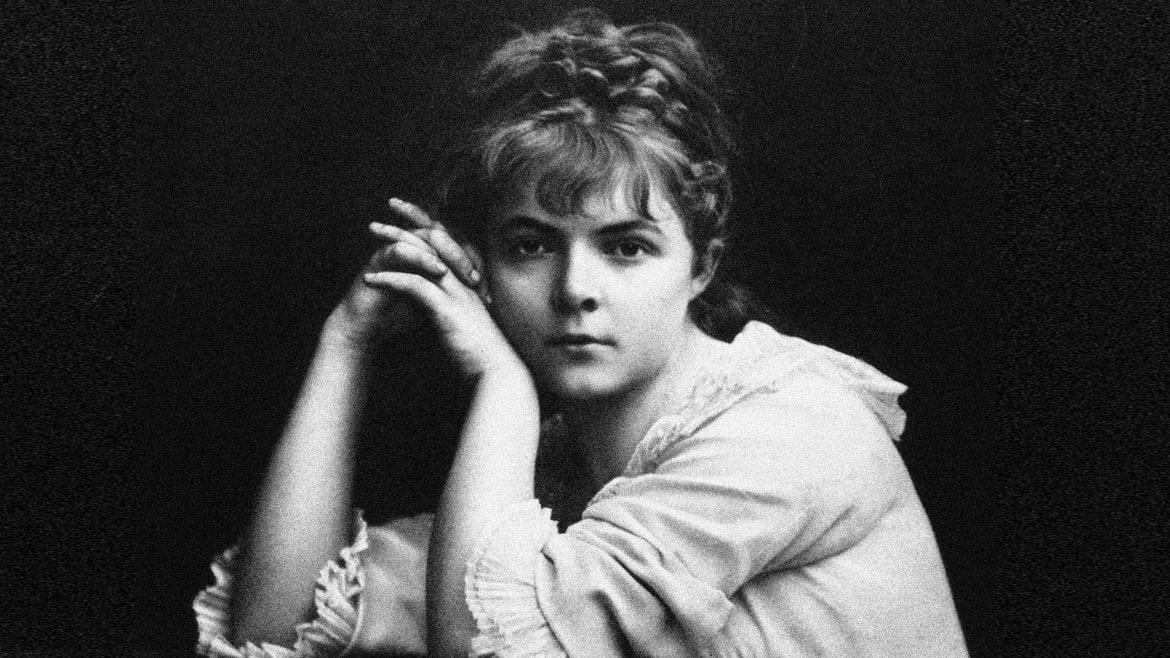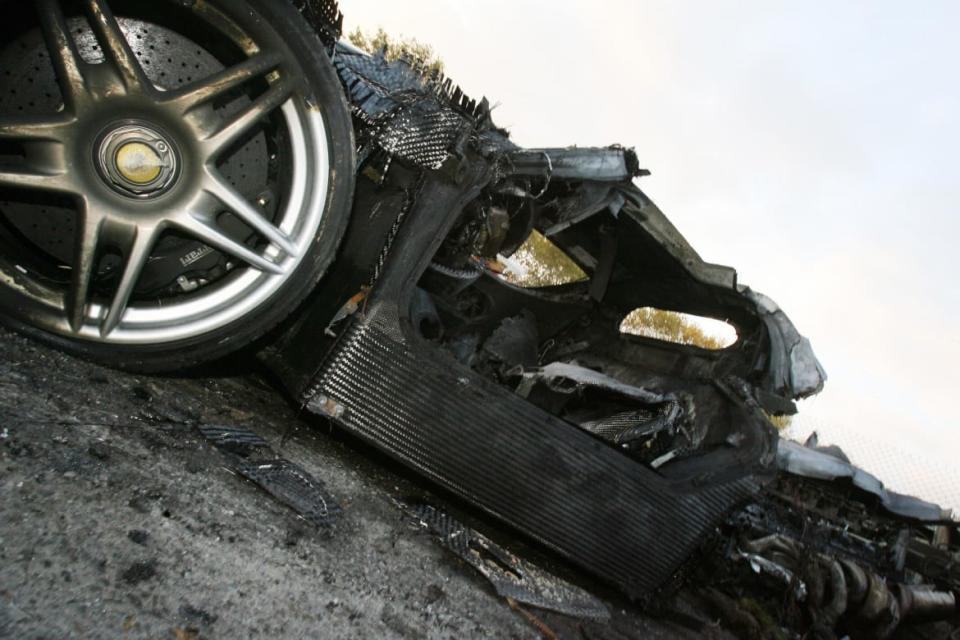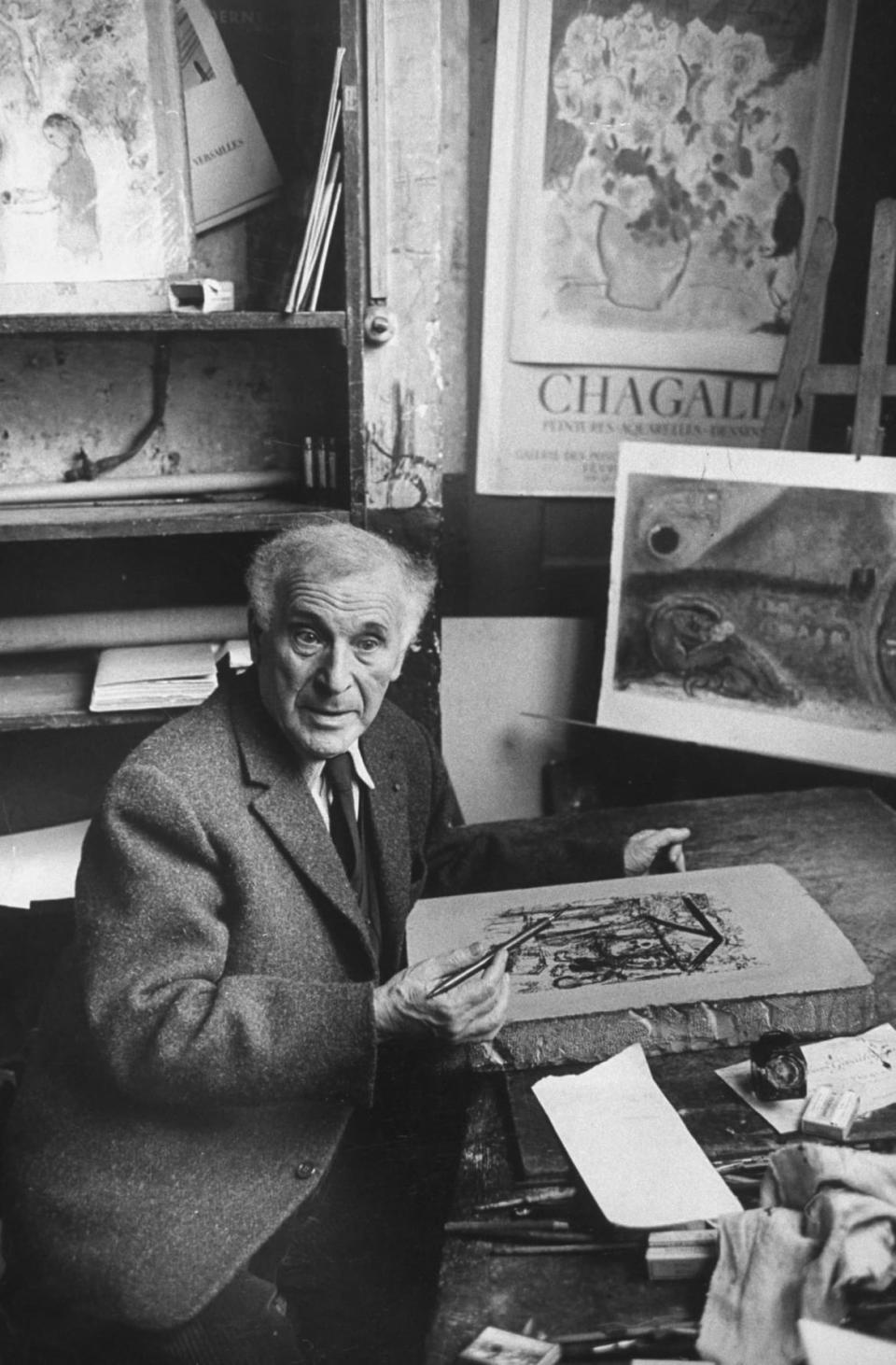Russians on the Riviera Say ‘We’re Not All Thugs and Gangsters’

This is the first in an occasional series about Russians on the Riviera, which is, yes, about the Moscow mob on the Med, and much more.
NICE, France—The Russians have been coming for a long time.
But when they first arrived in the mid-19th century on the Côte d’Azur, this mythic coastline stretching from Monaco to St. Tropez, they gave back. They left a legacy of art, literature and architecture, including the biggest Russian Orthodox cathedral in western Europe, built by Tsar Nicholas II.
An Arrest in France Freaks Out the Kremlin Kleptocracy
“We’re not all thugs and gangsters,” my friend Natalya, a Russian TV producer married to a former KGB spokesman-turned-multi-millionaire industrialist, once told me at her vast penthouse overlooking the Mediterranean in Monte Carlo. “People forget who we were 100 or 150 years ago. There was a Russia before Putin.”
Long before obscenely rich oligarchs like Suleiman Kerimov, Roman Abramovich, Dmitry Rybolovlev, Alisher Usmanov, Sergei Pugachev, Andrey Melnichenko, the Rotenberg brothers, Rinat Akhmetov and the late Boris Berezovsky shrewdly made billions off the fall of the Soviet Union and scooped up the French Riviera’s most prime real estate, there were the last of the Romanovs, the tsarinas who helped build the first Russian churches on the Riviera, the artist Marc Chagall—and the acclaimed writer and painter Marie Bashkirtseff.
Despite their creative imaginations, those early émigrés to the Riviera couldn’t have imagined a future where billionaire Russians would be crashing their black Ferrari Enzos into trees in Nice (Kerimov) or being arrested on suspicion of fraud (Rybolovlev) or money laundering through the purchase of sumptuous villas (Kerimov again, Abramovich and Berezovsky.) Nor could they have foreseen a time when Russians edged out the Italians to run the Mafia in Monaco.

"View of the wreck of a black Ferrari driven by a member of the Russian parliament, Suleyman Kerimov after the car hit a tree and burst into flames in the French Riviera city of Nice, 26 November 2006. A female passenger in the sportscar was also hurt in the crash, which occurred 25 November 2006. Officers said Kerimov, 40, was being treated in a burns unit."
But they could probably understand the resourcefulness of present-day refugees from the old Soviet Union. It’s well known in some corners of Nice, for example, that you can hire a former Chechen soldier with a pit bull for 100 euros an hour if someone is late paying back a loan or if you have a squatter in your apartment.
The Russians who came here before the Bolshevik Revolution, whether to settle or just enjoy the fabled winter season, were cultivated aristocrats or royalty. After the abolition of the monarchy and the establishment of the Soviet Union in 1923, many of them returned penniless, forced to forgo their luxe villas for boarding houses and drive taxis for a living.
“For a long time after that, the serious money down here was all English and American,” the late historian Francis O’Hara told me last year. “But now the Russians have all the money again, along with the Arabs.”
FAME OR DEATH
Born in what is now the Ukraine, multi-lingual Marie Bashkirtseff was just 12 years old in 1870 when she and her family moved to a villa on the famous Promenade des Anglais on the Nice seafront. She began writing (in French) an extraordinary diary at the age of 13 that presaged her death at 25 from tuberculosis and showed just how ballsy and feminist a young girl could be in a country where women would not get the vote until 1944.
Bashkirtseff and her modestly titled tome, I Am the Most Interesting Book of All, was published posthumously in 1887 and initially purged of its more radical and intimate passages by her mother. Later, writer and translator Phyllis Howard Kernberger exhumed Marie’s notebooks from the Bibliotheque Nationale in Paris and published the journal in its original form with all its passion and unapologetic narcissism.
“I was born to be a remarkable woman; it matters little in what way or how,” Bashkirtseff wrote. “I shall be famous or I will die.” She gave the opposite sex short shrift. “To a woman who knows her own mind, men can only be a minor consideration.”
Bashkirtseff, who died in 1884 in Paris, also left a trove of paintings that have been shown in recent years at museums throughout Europe, including the Musée d’Orsay in Paris, the Chéret museum in Nice and the Russian State Museum in St. Petersburg. More than 60 of her works, however, were destroyed by the Nazis.

"French painter Marc Chagall working on a painting."
Marc Chagall, né Moishe Shagal, was born in what is now Belarus a few years after Bashkirtseff’s death. He moved to Paris as a young man but eventually wound up in the south, in a stone house in the spectacular hillside village of St. Paul de Vence surrounded by the landscape that inspired him.
“There, in the south, for the first time in my life, I saw that rich greenness—the like of which I had never seen in my own country,” Chagall once said.
Chagall paid it forward by leaving all his artwork to the French government. The Musée National Marc Chagall in Nice is better known as the Biblical Message since Chagall considered the 17 biblical works included in his collection to be among the most important.
‘BILLIONAIRE’S BAY’
Russians have long settled all over the Cote d’Azur. One of their least-known communities has been at the exquisite seaside town of Menton, lodged just the other side of Monaco on the way to the Italian border and often overlooked by tourists plying the Cannes-Nice-Monaco circuit.
Both wealthy and middle-class Russians flocked to Menton before and after the revolution and created a home away from home with a sanitarium called the Maison Russe, a small Russian orthodox church, and a cemetery overlooking the Mediterranean.
In this century, some oligarchs like the controversial Dmitry Rybolovlev, who lives on the top two floors of the storied Belle Époque building, favor Monaco, but the heart of the Russian experience on the Riviera lies further west, on the tip of the breathtaking Cap d’Antibes peninsula, 12 miles from Nice.
It was here, on this rocky promontory dotted with cypress, umbrella pines and bougainvillea, that Prince Dimitri Romanov, a descendant of the House of Romanov, was born in the Villa Thenard in 1926. His parents came here after fleeing the Bolshevik Revolution and the murders of the Romanov royal family.
Rich Russians continued to gravitate here where they can look out on what is called “Billionaire’s Bay” or the “The Cove of False Money,” buying up the finest villas through an opaque system of shell companies and lawyers that inevitably attract the French tax authorities.
THE RUSSIAN GATSBY
The oligarch and senator Kerimov, 53, dubbed the “Russian Great Gatsby,” ran afoul of the taxman in 2017. Kerimov was linked to four properties on Cap d’Antibes. One was Villa Hier, the 12,000-square-meter, $35 million estate that served as Michael Caine’s house in the 1998 film about Riviera con artists, Dirty Rotten Scoundrels.
On paper the properties were owned by Kerimov’s Swiss associate Alexander Studhalter, but the Fisc, as France’s IRS is called, wasn’t having it. They believed Studhalter was a straw man to help Kerimov avoid paying high taxes to the French state.
Kerimov, who has a net worth of about $7 billion, was arrested in November 2017 at Nice airport on suspicion of money laundering and tax evasion. He was cleared of all charges in June 2018 in a decision that the Nice prosecutor called a “surprise.”
‘The Last Czars’: Inside Netflix’s Stunning Russian Answer to ‘The Crown’
Roman Abramovich wasn’t as lucky, losing his protracted battle with French tax officials who correctly deduced that he had undervalued his enormous villa, Château de la Croë, in order to pay less tax. The 18-acre estate, which sits alone at the tip of the Cap, was once home to the Duke and Duchess of Windsor, King Leopold III of Belgium, the last Queen of Italy, and Greek shipping tycoon Aristotle Onassis.
The most dramatic takedown of a Russian oligarch on the Cap occurred in 2005 when masked policemen from France’s anti-corruption unit landed Bond-style in helicopters on the lawn of Boris Berezovsky’s $10 million Château de la Garoupe and raided it, top to bottom. As with Kerimov, authorities believed Berezovsky had used a lawyer to hide and launder the money used to buy the villa.
Berezovsky did not fare well. He had been involved in a long feud with Vladimir Putin and some thought he might have been set up by the Russian leader, who might have felt he’d been stealing money from the Russian Federation, or undermining the Putinocracy, or both. In 2013, Berezovsky wound up dead in England in an apparent suicide, and the French state seized control of Château de la Garoupe.
“There’s a thin line between the [Russian] guys who win or lose down here,” Natalya told me. “You really have to have a serious enemy to wind up dead or in prison. Because most of the time when you’ve got the kind of money they do, the charges don’t stick.”
This story has been corrected to reflect the fact that women did not get the vote in France until 1944.
Get our top stories in your inbox every day. Sign up now!
Daily Beast Membership: Beast Inside goes deeper on the stories that matter to you. Learn more.

